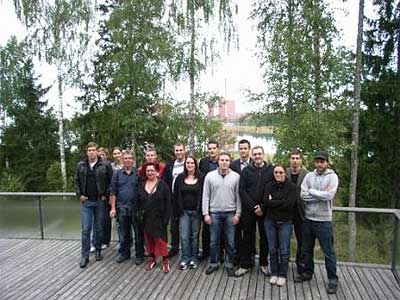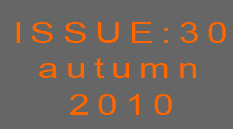
The contribution of the Young Generation of the Austrian Nuclear Society:
Up until the 1970s Austria was, like most other European countries, a state eager to develop and use nuclear technologies. The Austrian government, therefore, started to build a NPP –the BWR at Zwentendorf. The plant was finished in 1978. The fuel was already on the site, when the Western Europe anti-nuclear movement reached Austria, and people started questioning the safety of nuclear energy. The Chancellor at the time, Bruno Kreisky, decided to call a referendum on whether or not to start up Zwentendorf NPP. He was a huge promoter of the NPP, and announced that he would retire if the result was negative. The opposition, which was also pro–nuclear, used the chancellor’s statement to decrease the political influence of his party. So, this had a significant impact on the result. In the end 50.2 % of the population voted against Zwentendorf NPP, and the plant never became operational.
The Austrian Nuclear Society (Österreichische Kerntechnische Gesellschaft - ÖKTG) was founded in 1980 with the aim of starting up Zwentendorf NPP, which had been kept open awaiting further political decisions. In 1986, a new referendum was scheduled, but due to the Chernobyl accident it never took place. From this time on the ÖKTG tried to provide unbiased information on all nuclear topics.
After the year 2000, a few young people, who were strongly supported by the ÖKTG Chairman, Professor Helmuth Böck, became interested in nuclear technologies. The Young Generation was then founded in 2006, by Otmar Promper. The main purpose was to provide students with unbiased information about nuclear technologies. The group grew steadily and also young professionals joined our society. Today, we count around 50 members under the age of 35; many of them are still at university studying - mostly nuclear physics, electro-technical engineering, mechanical engineering, process technology or related subjects. The young professionals work mainly at AREVA, Westinghouse, the research centre Seibersdorf or at the IAEA.
As the group got bigger, the focus changed. Today, we don’t only provide information to our group, but we are also trying to build a network of experts to answer questions related to nuclear technologies. We try to change the attitude towards nuclear technologies in Austria.
We are quite active, also within the ENS-YGN. At the beginning of September 2010, we organised an excursion to Olkiluoto, Finland. This visit was organised in cooperation with the Finnish YGN. 15 of our members participated. The journey started on 6 September, with a flight from Vienna to Helsinki. From there we continued by train and bus to Rauma. On Tuesday morning a TVO bus took us to the island of Olkiluoto, where the two existing NPPs Olkiluoto 1 and 2, as well as the new EPR, are situated. Nearby on the same island, there is also a storage for spent fuel, as well as a final repository for low and medium-level waste.
The finish YGN gave an overview of the on-going projects there, on TVO as whole, and the two existing plants OL1 &2. After lunch we had a guided tour through the OL1 plant. It was a very detailed visit of the plant: We were taken to the workshops and the turbine hall, where we were told that TVO had recently changed the low-pressure turbine in OL2 and that they will also change it soon in OL1. Finally, we went to the reactor hall. From the reactor hall-level downwards we were able to enjoy a nice view over the whole island by using a glass elevator. The planned visit to the spent fuel storage facility had to be cancelled, as there was on-going work there.
After a short break, we got a guided tour through the Visitors’ Centre. One of the focuses was on the final waste repository and another on the OL3 project. We concluded the day with presentations from the Austrian side; we presented the history of the ÖKTG and also talked about the current situation in Austria. The evening was organised by our Finnish host. We spent some time together at the sea-side.
The next morning started again with presentations, this time about the OL3 and the OL4 projects. After an early lunch we finally visited the OL3 – building site and walked around the construction area, guided by the future operators of the plant. The tour included a detailed visit to the turbine hall, which is almost finished. After that, we were allowed to go to the final repository of the low and medium-level waste. It was built 60m underground, in the rockbed of Olkiluoto island. We saw the two silos where the waste is stored, as well as part of the project for the final repository for spent fuel. Two presentations about final waste management concluded the technical visit. In the evening we went back to Helsinki for some sightseeing the next day.
To summarise the journey, it was a very well organised trip. The Finnish YGN did a great job. For us it was very interesting to see the development in the reactor design. Many of us work in German NPPs, and so we could compare the changes and the improvements with the Konvoi – NPPs.
Another activity was the organisation of the 3rd Core Committee Meeting of the ENS-YGN, in Vienna. It took place from 17 - 19 of September and we welcomed 22 participants from all over Europe to the meeting. The agenda included three technical visits: one to the IAEA, where we were able to visit the Incident and Emergency Centre, as well as visits to two Safeguards Laboratories. The second tour was to the TRIGA Mark II Research Reactor at the Technical University of Vienna and the third was to the Zwentendorf NPP. The whole visit was a great success.
In the near future we are going to visit Austrian schools to present the subject of radioactivity and nuclear technologies to students as the subject is currently either avoided or only briefly touched upon by the teachers. These schools can later on also book a tour of the university’s research reactor, where they will even be able to do small experiments and measure radioactivity. For next year we are planning an excursion to Chernobyl.

Eileen Radde, eileen.radde@oektg.at www.oektg.at
|

